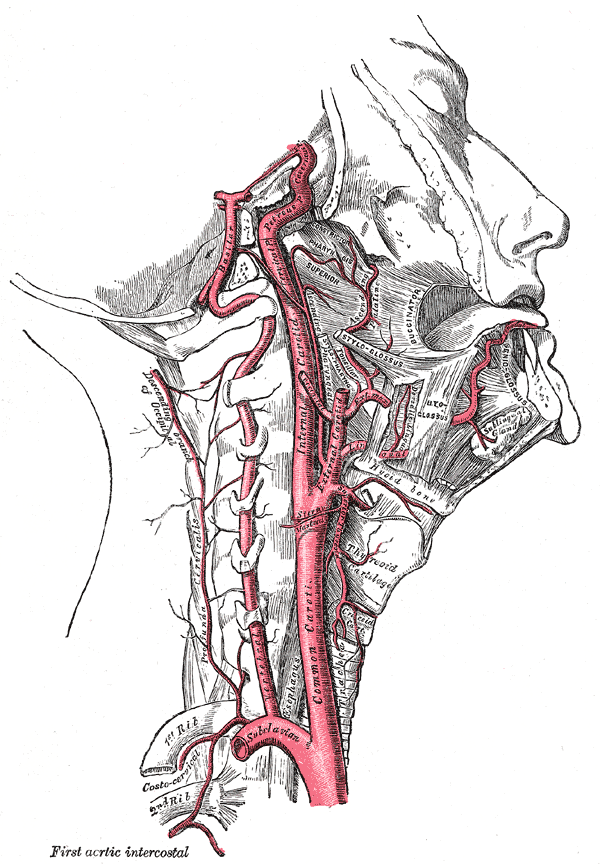What is a varicose vein?
l Long, tortuous and dilated veins of the superficial varicose system
l Commonly legs but where else?
1) Abdominal Wall
2) Anus
3) Vulva
4) Oesophagus
Why do they happen?
l increased pressure in the superficial venous system
l normally blood flows from superficial system to deep
l if the valves protecting the the superficial veins become incompetent there is higher pressure in the superficial veins and they become varicose
Causes
Primary
l Congenital abnormality, most common cause
Secondary
l Anything that raises intra-abdominal pressure or raises pressure in superficial/deep venous system
l so…:
– Pregnancy
– Abdominal/pelvic mass
– Ascites
– obesity
– constipation
– thrombosis of leg veins
Anatomy
l Superficial System arises from foot and ends at Sapheno- femoral junction or Sapheno- popliteal junction
l Long saphenous vein- medial leg up to SFJ
l Short saphenous vein- lateral malleoulus round back of ankle, up calf to meet popliteal vein behind knee
l Sapheno- femoral junction- 4 cm lateral and 4cm below the pubic tubercle
So the examination
l Inspection
l Palpation
– cough test
– tap test
l Ausculation
l Tourniquet Tests
– Trendelenberg
– Tourniquet test
– Perthes
l Doppler
– Sapheno-femoral junction
– Sapheno-popliteal junction
Inspection
l Start with patient standing-both legs exposed to the groin
l ‘I am looking along the distribution of the Long saphenous vein’ Medial side, length of the leg
l ‘Next I am looking along the distribution of the Short Saphenous vein’ Below knee, posterior and lateral aspects of leg
l Remember!!! when describing veins they arise at the bottom of the leg and go upwards to the groin!
Inspection- other features
- Venous Stars- blueish vessels that distend above the skin surface
- Thrombophlebitis- superficial red painfull lump
- Brown pigmentation- haemosiderin deposition
- Venous Eczema
- Venous Ulcers- over medial ankle or ‘gaiter area’
- Lipodermatosclerosis-progressive sclerosis of cutaneous fat- ankle becomes thin and hard- area above becomes oedematous
- Scars from previous surgery
Palpation
l Palpate the veins to confirm they are infact veins- will refill if if gently pressed and released
l Next- find the sapheno-femoral junction (SFJ)
– Find Pubic Tubercle just lateral to pubic symphisis
– 4 cm lateral then 4cm below
– Palpate for a sapheno varix- localised distension of the long saphenous vein in the groin
l Cough Test– Fingers over SFJ, ask patient to cough can you feel a thrill, if yes suggest incompetence
l Tap Test- tap over the SFJ and feel further down long saphenous vein for any transmitted sounds, if yes suggest incompetence
Ausculation
l Auscultate over any varicosites for bruits
l due to A-V malformation
Trendelenberg/Tourniquet tests
Aim- to localise the valve/s that are incompetent
Trendelenberg
l Lie patient down and raise leg attempting to drain varicosities of blood.
l Using either a tourniquet or fingers put pressure over SFJ to occlude it
l Ask patient to stand
If varicosities DO NOT refill indicates SFJ incompetence
If DO refill the leaky valve is lower down
‘I will now try and locate the incompetent perforator using the tourniquet test’
l Same as before- lie down, raise and drain leg
l Place tourniquet approximately over area of each perforator( mid thigh, sapheno popliteal, calf perforators)
l If varicosities DO NOT refill that perforator is incompetent
l If varicosities DO refill continue down leg
Perthes test
‘ I will now check the patency of the deep venous system’
l important for theatre as if superficial veins removed and deep veins occluded- problem
l Ask patient to stand up
l tourniquet round mid thigh
l raised onto toes 10 times ( pumps blood up leg)
l if veins empty– deep system fine
l if veins swell and become painful– ? deep vessel occlusion
Doppler!
l Must practise with a Doppler before LOCAS or you will look like a fool
l Has taken over from tourniquet test as gold standard
l ‘I would like to use a Doppler to check for incompetence at the Sapheno femoral junction and Sapheno popliteal junction’
l Find SFJ
l Place doppler over it
l Squeeze either thigh of calf
l One whoosh as blood goes up – good
l second whoosh if blood comes back down bad! means SFJ is incompetent, the quicker the second whoosh the more incompetent the valve
Remember one whoosh good two whoosh bad!
l Exactly the same in Sapheno- popliteal junction in popliteal fossa
Some questions:
l Management options:
– Conservative- reassurance, exercise, avoid long stands, weight reduction, elevation of legs, compression stockings
– Surgical- injection sclerotherapy, ligation of SFJ (trendelenberg procedure), Stripping of tributaries, isolated removal of small varicosities
l Symptoms of varicose veins:
– aching leg pain
– tired/heavy legs worse as day progresses and long periods of standing
– skin changes-hair loss, itching, eczema etc
– swellings
 howMed Know Yourself
howMed Know Yourself


